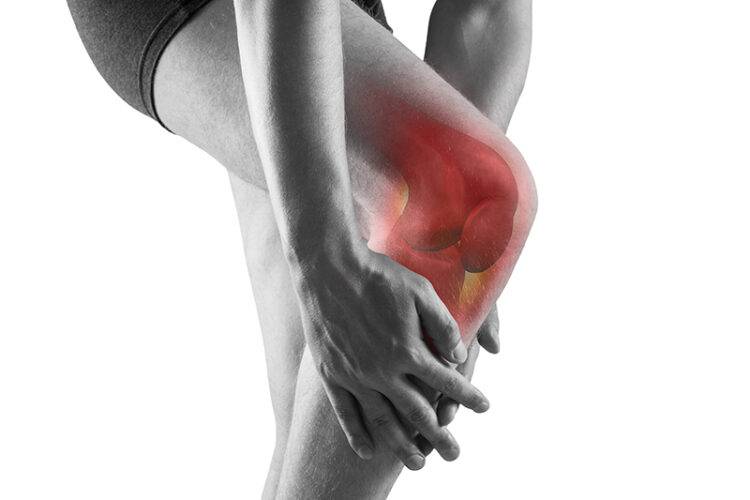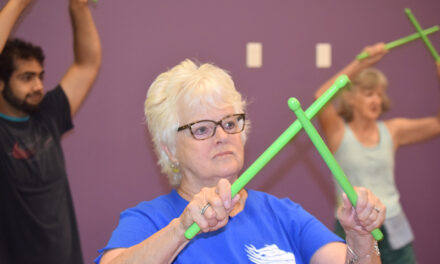
Dr. Karen Phillips
Family medicine practitioner
From the sudden sharpness of a new injury to the ongoing ache of an old one, sometimes pain is a part of life.
While we’d like to live a 100 percent, pain-free life, Dr. Karen Phillips, a family medicine practitioner at the Presbyterian Family Medicine clinic in Los Lunas, says that really isn’t feasible, especially when it comes to chronic, long-term pain.
People generally experience two different types of physical pain — acute and chronic — Phillips said. Acute pain is caused by something like a broken ankle or torn ligament, while chronic pain can be more insidious.
As a general rule of thumb, acute pain is a condition that lasts about 30 days, during which time the injury heals and the person can return to normal activities without severe pain.
Chronic pain usually lasts more than a month, or in some cases, comes and goes, the doctor said.

Stock photo
While it sounds counter intuitive, a sustained-movement program can greatly benefit people with chronic pain.
“Acute pain can definitely be a beginning point for chronic pain. Maybe your ankle started to hurt and you didn’t think about it, didn’t get it looked at, so it continues to bother you,” Phillips said.
Chronic pain can also start with overuse injuries, such as with a runner’s knees.
“They are beating up their knees every time. Now, I’m not saying don’t run but rather pick an appropriate running surface and the right footwear,” she said. “Rodeo cowboys really abuse their bodies. More severe movements like that can cause chronic pain. I have a few patients who are so sorry now that they’re 70.”
The use of pain as a vital sign — with 1 being not so bad and 10 being the worst ever — was initially used when a patient was hospitalized with a lot of pain and it wasn’t addressed, Phillips said.
“Then it came to the outpatient setting and we were encouraged to give things — narcotics — until someone was pain free. That was a bad plan,” she said. “Really, the goal is not a pain-free life but rather being able to function, to do the things you like to do whether it’s sports or gardening.
“For some older folks, it’s being able to walk through the grocery and be OK, to get around in their homes and perform the functions of life they deem necessary.”
When it comes to addressing chronic pain, Phillips says there’s “not a lot of magic,” and the most useful way to help reduce pain is through movement, stretching and strengthening.
“It sounds counter intuitive because when something hurts, you want to stop. Proper physical therapy can be used to learn how to brace your muscles correctly, build them so things glide smoothly,” she said.
Phillips said she recently read a study that showed 30 percent of patients with chronic pain found relief through either over-the-counter medications or prescriptions, while 50 percent benefited from a sustained-movement program.
“If you have an acute injury, rest and ice is important for healing, but if your pain is in the chronic realm, just stopping is the worst thing you can do,” she said.
While pain can come from an injury, sometimes simple wear and tear or even autoimmune diseases, such as rheumatoid arthritis, can cause someone pain.
Recognizing RA early is important for treatment, Phillips said.
“Unlike osteoarthritis, rheumatoid arthritis is very destructive to joints,” she said. “It’s a different process than having wear and tear on the surface of cartilage and joints, which won’t develop into something terribly disabling so long as you keep moving.”
Treatment of RA usually involves prescription anti-inflammatory medications through a doctor to stop the destructive process.
“We’re not talking about arthritis where things are creaky and slow and you walk around five minutes and feel better,” she said. “These are usually people with red, hot joints. It’s important to recognize it soon.”

Stock photo
Rheumatoid arthritis, an autoimmune disease, can cause chronic pain and permanent joint damage. The condition needs to be diagnosed early on to give a person the best chance at a quality life.
Phillips said a small number of people develop RA, with osteoarthritis being a much more common problem. There is a wide variety of treatments for osteoarthritis, such as topical, over-the-counter treatments, prescription non-steroidal anti-inflammatory medications and even the simple application of hot and cold compresses.
Before taking OTC medications, Phillips recommends checking with your primary care provider, especially if you have liver issues or high blood pressure, so they can guide you to what’s safe for your medical situation.
If you aren’t experiencing a serious condition such as RA, there are some things you can do to prevent future pain — most of which consist of moving on a regular basis. Seeing a physical therapist for guidance on proper movement is one option Phillips recommends, but said access can depend on insurance.
“Some allow you to do self referral, some need a referral from a primary provider,” she said. “There are also other options, like the Silver Sneakers program at some gyms for seniors. Most gyms have athletic trainers who can guide you. Just walking is a powerful tool; it’s good for your heart and lungs. At this point, we know gentle weight lifting is beneficial.”
The advice you got in elementary PE classes still holds true, too, she said. Stretching before any other kind of exercise helps limit injuries and pain.
“I deal with elderly patients after something has happened. If you are in your 20s and 30s, start now so you can maybe avoid the traps of later,” she said. “Get accustomed to using your body and movement to stay functional.”
Regardless of your source of pain, Phillips said the standard course of treatment typically starts with the least invasive option.
“If you just feel like you’re not functioning, then you might move on to injections, surgeries and replacements,” she said. “At this point, for 99 percent of people, narcotics are not indicated for chronic pain, unless it’s cancer pain.
“It doesn’t really improve functionality. It’s just not something that gets people to the point of function they want. My best advice is don’t ignore things and do things to work on getting better. We are not headed for pain free, but rather pain low enough to be functional and do what we want to do.”
Julia M. Dendinger began working at the VCNB in 2006. She covers Valencia County government, Belen Consolidated Schools and the village of Bosque Farms. She is a member of the Society of Professional Journalists Rio Grande chapter’s board of directors.

















